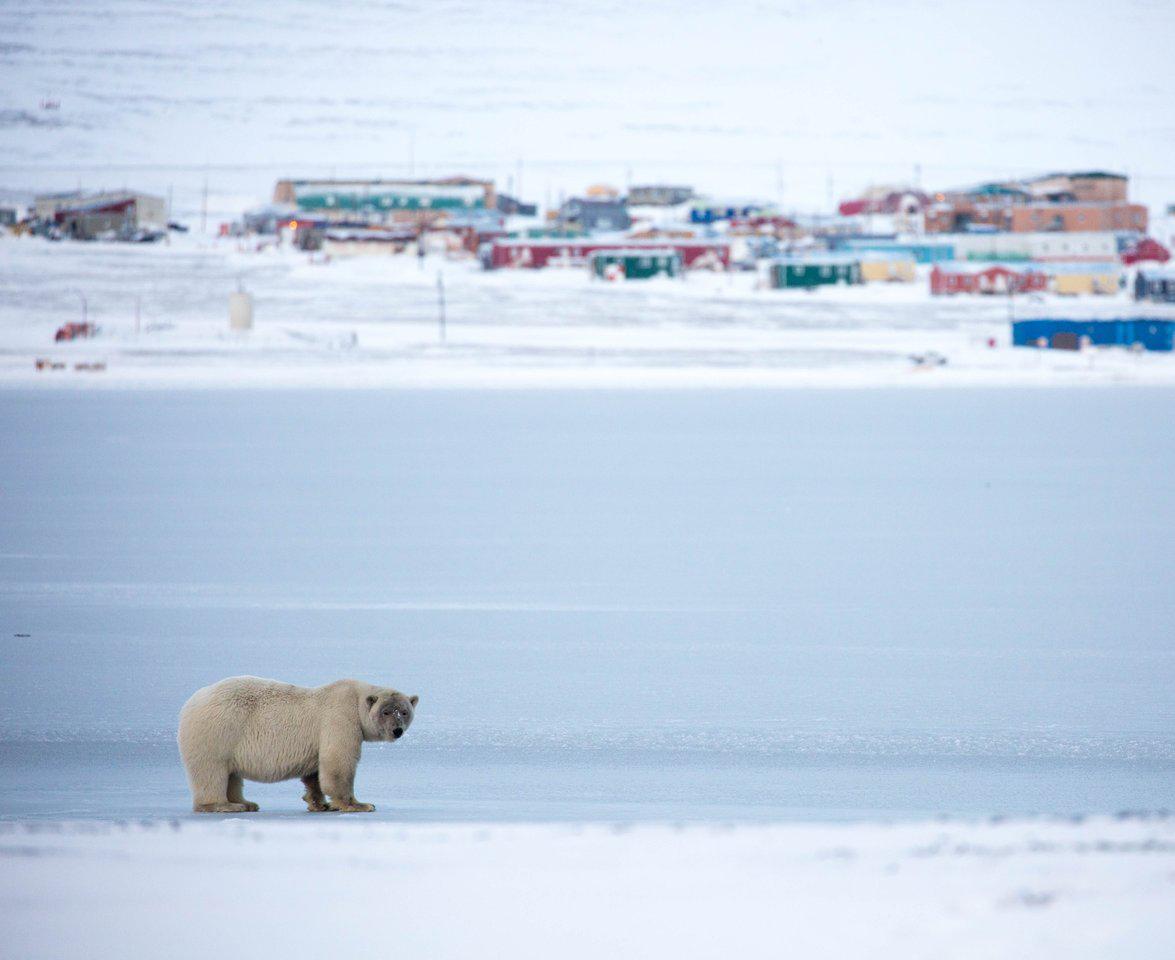Coral Harbour is a small community located on Southampton Island at the north end of Hudson Bay. Its English name is derived from the fossilized coral that can be found in the adjacent waters of South Bay.
The plural Inuktitut form ‘Salliit’ is sometimes also used. Extraordinary archaeological sites of the ancient Tuniit (Dorset) culture are scattered around Southampton Island. Coral Harbour is becoming a very popular ecotourism base for some of the best walrus and polar bear watching in Nunavut.
800
97% Inuit
Inuktitut, English
Longitude 83° 10’ W
Latitude 64° 08’ N
Elevation 24m
Coral Harbour and all of Southampton Island has flat terrain characterized by barrens, coastal marine features, meadows, inlets, rocky flats, sedge and tundra.
Weather & Climate
Coral Harbour has a dry, windy climate. Summer temperatures range from 8°C to 24°C. Winter blizzards are common, with temperatures occasionally dropping to -50°C. The sea ice freezes in November and breaks up in early July.
| Average Temperature in Coral Harbour | |||
|---|---|---|---|
| January | -30oC | February | -30oC |
| March | -26oC | April | -17oC |
| May | -7oC | June | 3oC |
| July | 9oC | August | 7oC |
| September | 1oC | October | -7oC |
| November | -17oC | December | -26oC |
HISTORY
Sallirmiut (‘inhabitants of Salliq’) lived on this island from 500 BC until the winter of 1902-1903 when they all died from a typhus epidemic introduced by an infected Scottish whaler. The Sallirmiut were the last vestige of the ancient Tuniit (Dorset) people and may have intermarried with Thule people before they became extinct.
Dorset Culture (‘Tuniit’ or ‘Sivullirmiut’): 500 BC to 1500 AD
Thule Culture (Proto-Inuit): 1000 AD to 1600 AD
Inuit Culture (Eskimo): 1600 AD to present-day
Within a decade of their tragic demise by disease, the island was repopulated by Aivilingmiut (‘people of the walrus place’) from the mainland areas of Repulse Bay and Chesterfield Inlet.
The first recorded European person to ever visit this island was the Welsh explorer Thomas Button in 1613 when he was trying to locate the Northwest Passage and any trace of the English explorer Henry Hudson whose crew mutinied in 1611.
From the late 1700s to the early 1900s, whaling vessels hunting bowhead whales frequented the area of Hudson Bay and Foxe Basin. The Hudson Bay Company chose the current site of Coral Harbour for a trading post in 1924. Anglican and Catholic missions soon followed.
In WWII a United States Air Force base was constructed here as part of the Crimson Route delivering fighter aircraft to Britain. During the Cold War years the airbase was a depot site serving the DEW line. Materials arrived by ship to be flown north. Most local Inuit families continued to live a nomadic lifestyle, moving between winter and summer hunting camps around the island until 1950 when the day school was built in Coral Harbour. The community has continued to grow and develop ever since.
ACTIVITIES AND WILDLIFE
There are roads and trails around the island for hiking, mountain biking and exploring by ATV in the summer months and several excellent spots to fish for arctic char near town.
Southampton Island is home to many species of wildlife including handsome herds of caribou and fine flocks of snow geese.
At nearby Native Point there is a sacred archaeological site of the Sallirmiut people, the last descendants of Tuniit (Dorset) culture that is sometimes called ‘The Lost City of the North.’
ARTS AND CULTURE
‘Salliq’ artists, seamstresses and craftspeople produce a range of carvings, articles of traditional clothing and other handicrafts.
Parks
Fossil Creek Trail
The Fossil Creek area has the best assortment of fossils in Nunavut. It contains the petrified remains of many creatures that lived 450 million years ago. You can learn about the remarkable geological history that makes this area so unique and you can participate in the ‘Great Fossil Hunt’ to find the greatest fossils in the territory.
Harry Gibbons Migratory Bird Sanctuary
This sanctuary is located in western Southampton Island near the Boas River and Bay of Gods Mercy, about 103 kilometres (64 miles) southwest of Coral Harbour. It protects 1,224 square kilometres (473 square miles) of tundra and tidal habitat for many arctic birds.
East Bay Migratory Bird Sanctuary
This sanctuary is located in East Bay in southeast Southampton Island, about 71 kilometres (44 miles) east of Coral Harbour. It is 1,138 square kilometres (439 square miles) in size and it protects habitat for dozens of bird species including arctic terns, atlantic brants, black-bellied and golden plovers, black guillemots, herring and Sabine’s gulls, jaegers, ruddy turnstones, king eider ducks, red knots and red phalaropes, white-rumped sandpipers, oldsquaws, Canada geese and red-throated loons.

